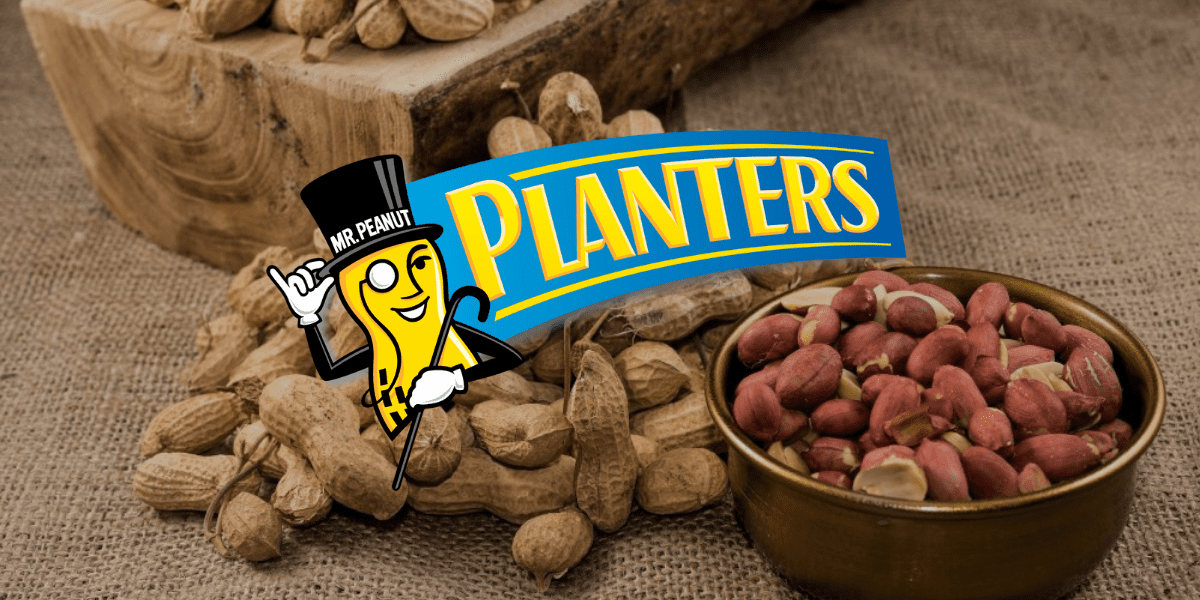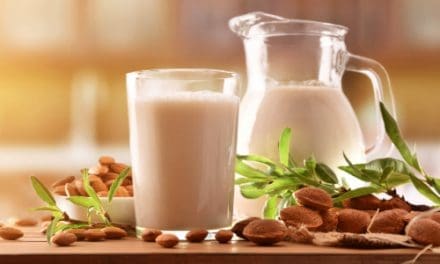Last updated 5 days ago ago | Originally Published: September 19, 2021
Understanding America’s Love For Planters Peanuts
If you’re a peanut fanatic, then there’s no better place to be than right here. We’ve got all the answers to your biggest questions about Planters Peanuts. Continue reading to learn about the history of peanuts and how they’re grown. Lastly, don’t forget to check out our Nuts and Seeds Product Page if you have a burning desire for peanuts after reading this!

An American Favorite
Planters Peanuts are an American favorite, but it wasn’t always that way. Peanuts were first introduced to the United States in the 1800s, it wasn’t until the late 19th century that they became widely popular.
In the early days, due to their high cost, most Americans ate an extremely small variety of plants at home. Everything was grown from seeds, which tended to be a more expensive plant than peanuts.
But, it wasn’t until the industrial revolution when a variety of seeds were introduced to plant breeders and farmers that peanuts started to become more popular. Peanuts now produce high yields and are one of the most easily adaptable grown crops in the United States.

The History of Planters Peanuts
When Planters was founded in 1906, the company held an ad contest to determine what its brand icon should be. Antonio Gentile, then just 4 years old, won the contest with his depiction of Mr. Peanut as an early 1900s ragtime fiddler.
In the 1900s, Amedeo Obici had an idea: he wanted to create a brand that could be found in people’s kitchens and pantries. One that would appeal to children and adults alike. He wanted his brand to be about quality and freshness, and so he set out to create a product people would love and crave: peanuts.
After that, the planters brand was selling peanuts from its stores across the country, including a shop along the Atlantic City boardwalk. In 1937, a billboard featuring the Mr. Peanut character was erected in Times Square. By 1950, The Planters brand had begun to advertise on television, with their first commercial airing nationwide.
Planters Peanuts Translates Into Perfection
As the oldest peanut brand in the United States, Planters has an intricate history, one filled with innovation. In 1962, for instance, the brand introduced Dry Roasted Peanuts, a product that also showcased the brand’s proprietary spice blend.
Above all, the company took pride in its commitment to the highest standards of the peanut industry. With over 130 years of experience under their belt, Planters has perfected making roasted peanuts. With an arsenal of recipe options, Planters takes your classic peanut and turns it into the most delicious creation you’ve ever had, with unique seasonings to fit any occasion or taste. They leave no stone unturned in their quest to create the ultimate peanut.

Where do peanuts come from?
Certainly, if you love peanuts, you’ll love this fact. Did you know that there are two different types of peanuts? There are Virginia peanuts, which are large and round, and Spanish peanuts, which are smaller and tapered. Both are used in the production of peanut butter.
One of the reasons behind this difference in size is the different processing methods used to prepare them, as well as the different uses they are put to. Let’s find out what you need to know about each type of naturally grown nut, so you can figure out which type might be best for you.
The 4 Main Tastes
There are four main taste sensations associated with each type of nut: sweet, salty, pungent, and bitter. Sweet is the most noticeable taste and might be the most difficult one to perceive. There are several things that can make this experience easier, such as smelling the nuts when opened, handling them, or cooking them.
How do peanuts grow?
How do peanuts grow? People often confuse peanuts with tree nuts — but they’re not. Although we refer to them as nuts. Peanuts actually grow underground and grow as a vine above ground during spring and summer.
In short, the peanut plant flowers above the ground, but fruits below the ground. Seeds are planted after the last frost around April or May when the soil reaches the perfect temperature.

How are peanuts seeded?
First, peanuts are most often used to make seeds for the garden, however, they can have other uses as well. Peanuts can be eaten as a snack, they can be ground into flour to use as a flour alternative in baked goods, or soaked into milk to make plant-based milk. They work well in a variety of desserts since they are remarkably sweet.
On the other hand, if you can find the shells, you can extract the seeds and add them to your favorite bread or cookie recipe. Or even use them to dress up a salad. Peanuts are amazing in roasted nuts, roasted seeds for salad toppings, or even with jam!
Whole Worms or Shelled
Second, peanuts are intrinsically segmented, meaning they have shells and seeds inside them, but not all varieties of peanuts are edible. There are different types of peanuts, each with its unique flavor profile. Whole peanuts are truly the best because what you’re eating is the entire peanut. So, there’s less wastage, less extra work, and sometimes fewer seeds to grow.
Moreover, they’re more nutritious because they’re more nutritious than the shells alone. Shelled peanuts have a slightly different flavor profile that’s best when eaten whole. They don’t have as much fiber or sugar and more fat. In other words, they’re not as good for you. We like the flavor and crunch of peanuts that can’t be eaten whole.
How to Choose the Right Peanuts
When it comes to peanuts, there are a few things to look out for when choosing the right ones. First, choose natural peanuts. These are the ones that are just peanuts with no added ingredients. Second, choose dry-roasted peanuts. These are roasted in oil, which is healthier than roasted in lots of salt. Third, avoid peanuts with added sugar.
Subsequently, peanuts don’t taste great raw. They need a little time to bring out their best flavors, and often that’s not just because of the heat. When the ground peanuts are first roasted and rolled, they are usually bright green and golden. Once they’re ground, they take on a more grainy texture. Therefore, they are ideal for coating in a creamy sauce.

Preparing the Peanuts
To prepare peanuts for consumption, they are first roasted on a rotating roaster to ensure all parts of the nut, including the shell, are roasted evenly. Once the roasted nuts are ready, they’re dried on paper towels, then pulverized with a food processor or blender. These nuts are then dehydrated, hand crushed, and ground to produce peanut flour. The flour is combined with other ingredients such as salt and liquid refined from sugar to make a paste or spread.
Can you eat peanuts raw?
Peanuts are an extremely popular snack in the United States, but did you know that you can eat Planters peanuts raw? Planters peanuts are typically roasted or boiled in their shells, but you can eat Planters peanuts raw if you like crunchy snacks.
While peanuts are sometimes known as gourmet edibles due to their small seeds, the peanut has been a staple food in America for centuries. It is used to make jams, toasted as crackers, or just eaten as a snack. Of course, the easiest way to enjoy the benefits of peanuts is to eat them. The shell is edible after being opened, but most people prefer to eat the inside.
Peanut Butter: A Pantry Staple

Peanut butter is a great source of protein and healthy fats and while it’s a great snack, it’s also great to add to other foods to add more flavor and bulk. Adding peanut butter to smoothies and oatmeal is a great way to get protein and keep you full for longer.
Favorite Ways to Use Peanut Butter
Here are some favorite ways to use peanut butter:
- Add to smoothies
- Spread on toast, crackers or use as a dip
- Try it in a fruit salad
- Spread pickled vegetables or fruit on toast
- Try it in overnight oats
- Spread on toast, sprinkle on mains, flavor with spices or honey
Shelf Life of Peanut Butter
You’ll often find brands of peanut butter that have expiration dates. Sometimes this will only be found when purchasing in bulk from the company whose name is listed on the container.
Because peanut butter goes rancid within a year or two, always check the date on your container of peanut butter. Even though the shelf life of peanuts is short, it can be important to ingest fresh peanut butter, since the longer it sits, the more chance there is for serious digestion problems.

Planters Peanuts in Recipes
It isn’t easy to find delicious pecans or walnuts in the typical grocery store. But in many regions, you can now find gourmet pecans and roasted walnuts. Of course, any out-of-season/raw peanuts can also be made into peanut butter.
DIY Planters Trail Mix
This DIY Planters Trail Mix is a delicious combination of dry roasted peanuts, candy-coated chocolate pieces, and the dried fruit of your choosing. It’s perfect for snacking on the go or as an after-dinner treat. To make it, simply combine the nuts, chocolate pieces, raisins, and any other dried fruits you like!
PREP TIME: 30 minutes
SERVINGS: 7
Ingredients:
- 1 cup Skyline Chili Oyster Crackers
- 1 cup Apricots Jumbo Dried Glazed
- 1 cup mixed nuts (Planters Variety Pack)
- 1 cup dry roasted peanuts
- 1 cup Albanese Milk Chocolate Triple Dipped Malt Balls
- 1 cup Milk Chocolate Covered Raisins
Directions:
Add all ingredients into a large bowl. Mix well and enjoy immediately. Store in an airtight container or bag for up to 2 weeks.
Peanut Oil
Peanut oil has been around for decades and is still a great option for cooking, especially in Asian cuisines. Peanut oil comes in a variety of solid and liquid forms. Liquid peanut oil can come in a variety of syrups, sulfates, and caramel colors (which gives it a caramel-y taste).
This section of the guide will help you get started with this delicious vegetable oil.
- UPPER-INTENSITY HEAT
This is a good choice for sautéing vegetables and grains or lightly cooking proteins like vegetables.
- MID-INTENSITY HEAT
Good for sautéing and deep-frying, as well as sautéing and roasting.
- LOW-INTENSITY AVOCADO OIL
High in saturated fat and other nutrients, this oil has a smoke point of 450oF/232oC. It is best for deep frying, sautéing, roasting, and grilling. If you want a higher smoke point, use grapeseed or sunflower oil instead.

Common Types of Peanut Oil
The traditional form of peanut oil consumption relies on cooking with it. This can be done in a wide variety of ways and is regarded as the best way to cook the vegetable. Commercial peanut oils have been linked to a variety of health outcomes, and these have led to the move to heat treatments which are testing more and more health claims and achieving the same results.
What kind of peanuts are there?
Peanuts are the seeds of the Arachis hypogaea plant, and there are actually different kinds of peanuts. The two main categories of peanuts are Runner and Virginia. Runner peanuts, also called Manilla peanuts, are smaller and have a more delicate flavor than Virginia peanuts. Virginia peanuts are larger and have a bolder taste.
What does it mean that Planters Peanuts are “roasted and salted”?
In other words, “Roasted and salted” means that the peanuts were roasted first and then salted. The roasting process is important because it gives the peanuts a richer, more intense flavor than if they were just salted. It also helps to lock in the flavor of the salt so the peanuts don’t become too salty.

Time to Buy Peanuts
It’s time for you to experience the difference. Try out our peanuts today and see for yourself! We offer a variety of flavors to suit your taste buds, with a selection of nuts to choose from. Our online store also ships in lightning-fast times. Just click on the Nuts and Seeds Product Page to get started.
In short, we hope that this guide has been a helpful asset to those who enjoy Planters Peanuts as much as we do! So if you’re still hungry for more peanutty knowledge, we encourage you to reach out by clicking here or by phone at 855-246-1038!







What are names of planters peanuts that have been discontinued since 1980 ?